Badabaragi (바다바라기)
14.3 Km 4536 2019-05-24
111, Jeongja 1-gil, Buk-gu, Ulsan
+82-52-282-8866
Badabaragi is a restaurant with an ocean view in the Buk-gu district of Ulsan, specializing in snow crabs and fresh raw fish. Featuring elegant exterior and interior designs, the restaurant also offers some light meal options in addition to sliced raw fish and snow crab dishes. Only the freshest fish caught and delivered each day are served. The restaurant also operates a snow crab market, thereby offers snow crab dishes at affordable prices. A variety of side dishes made with fresh seafood accompany the main dishes. Abalone or conch porridge is available for young children who cannot eat raw fish or snow crab. A popular menu item is jjambbong mulhoe (mixed sliced raw fish with water and spicy sauce).
Kolon Hotel Gyeongju (코오롱호텔)
14.5 Km 16302 2021-04-15
289-17, Bulguk-ro, Gyeongju-si, Gyeongsangbuk-do
+82-54-746-9001
Kolon Hotel Gyeongju is located in front of Bulguksa Temple, one of the world’s top ten historic sites. The building features arch-shaped fortress wall with spacious areas, designed with both traditional and modern elements. As a recuperation hotel, it houses a spa using sodium bicarbonate water, and a 9-hole public golf course. It offers a cozy ambience and sincere service with varied facilities including pleasant guestrooms viewing the sunrise of Tohamsan Mountain, sports facilities for golf, swimming, jogging and spas. It is the only premium-class hotel in Gyeongju to have hot spring spa facilities. The lobby on the third floor is famous for the lounge where people can enjoy the panoramic scenery of Tohamsan Mountain while relaxing, as well as a coffee shop serving various drinks and a luncheon over live music.
Cheonggong [Korea Quality] / 청공한옥 [한국관광 품질인증]
15.9 Km 9380 2020-09-08
5-6, Igu 2-gil, Gyeongju-si, Gyeongsangbuk-do
+82-10-4577-5223
Cheonggong Hanok is a mere 10 minutes away from Bulguksa Station (Donghae Line) on foot. The two traditional Hanok buildings house 10 rooms. Once you enter the main gate, the harmonious scene of a big grassy yard, a very old pine tree, a small pond, and the graceful Hanok buildings welcomes you. The garden looks a bit exotic, but there is a back story to it. The first architect of the house did business in Japan with his wife living alone in Gyeongju but regretted not having spent a long time with her; thus, he came back to Korea, built the biggest house possible, and lived with his wife for the rest of his life. Afterward, his descendants took over it, named it after the architect, Cheonggong, and opened it as a Hanok stay. That is how the space where Korea’s traditional Hanok and Japanese garden were put together by the Korean architect who did an extended stint in Japan came to be. The table used by the couple is preserved in the garden for guests to look at. Although it is a traditional Hanok, every room is equipped with a TV, a refrigerator, an air-conditioner, and a bathroom to make the space comfortable to stay even for children.
Village de l'artisanat folklorique de Gyeongju (경주민속공예촌)
16.0 Km 31858 2020-04-29
230, Bobul-ro, Gyeongju-si, Gyeongsangbuk-do
+82-54-746-7270
Il s'agit d'un village habité par de nombreux artisans ayant pour objetctif de faire vivre et transmettre les techniques traditionnelles de l'artisanat en Corée. Le village est ainsi constitué de 40 maisons à toit de chaume mais aussi de maisons couvertes de tuiles. Le village abrite également des petites sociétés de production dans les domaines comme métal, poterie, charpenterie, bijouterie, hanbok, contrefaçon des patrimoines culturels, artisanat en pierre, etc. Il est possible d'admirer le processus de fabrication des oeuvres des artisans ou de participer à des activités pratiques. Il est aussi possible d'acheter des produits bon marché. Le parcours entre le temple Bulguksa et le complexe Bomun constitue un itinéraire à ne pas manquer pour profiter de magnifiques paysages.
Musée scientifique de l'histoire du royaume de Shilla (신라역사과학관)
16.1 Km 23419 2023-04-07
33, Hadonggongyechon-gil, Gyeongju-si, Gyeongsangbuk-do
+82-54-745-4998
Situé à l’intérieur du village folklorique et artisanale de Gyeongju, le musée scientifique de l’histoire du royaume de Shilla propose de vos faire découvrir les patrimoines culturels de l'epoque à travers notamment des reproductions de taille réduite.
Au rez-de-chaussée, vous trouverez une carte de la capitale du royaume de Shilla, des reliques excavées du tombeau hwangnamdaechong ou encore des reliques trouvées sur les mont Namsan. Au 1er étage, sont exposées des couronnes en or des royaumes Shilla et Baekjea, l’écriteau du temple Haeinsa. Au niveau -1, se trouvent des reproductions de Sukguram ou de la trinité bouddhique. A l’extérieur, vous pourrez voir Gameunsaji et Cheomsungdae.
GyeongjuCheonnyeonhanok Pension [Korea Quality] / 경주천년한옥펜션 [한국관광 품질인증]
16.6 Km 9165 2020-09-09
86-61, Sidong-ro, Gyeongju-si, Gyeongsangbuk-do
+82-10-9898-3995
Cheonnyeon Hanok Pension, located in Sirae-dong, Gyeongju-si, Gyeongsangbuk-do, was newly opened in April 2014. The owner discovered this geomantically ideal site, with a mountain to its rear and a river to its front, and constructed a 238m2 hanok on a 1,778m2 plot of land. The hanok is a ‘ㄱ’-shaped structure consisting of two floors above ground, with the guest accommodation situated on the first floor. The pension was named ‘Cheonnyeon Hanok’ to represent the owner’s wish that the house be preserved for over a thousand years (“cheon nyeon”). It is set amid a beautiful landscape and commands an open view of the nearby pine grove, a large pond, fields, and Tohamsan Mountain. The house is built of pine wood and red clay, and features an eco-friendly geothermal floor heating system and double-layered doors to keep out drafts. Although the outer yard is covered with gravel, the spacious grassy inner courtyard of the bonchae building is equipped with benches, and serves as both a playground for children and a relaxing space for adult guests. The garden is notable for its well-tended flowers and trees. The pension has 6 guestrooms including four single rooms (23m2); one room (29m2) with a numaru (upper floor) that can accommodate 3 to 5 people; and a two-room (46m2) suite that can accommodate 4 to 10 people. Maehwa-bang (single room) is characterized by rafters and a ‘井’-framed ceiling; Mogryeon-bang (two rooms) is a large guestroom that can accommodate two to three families, and has a sliding door in the middle for convenient use of the space; and Yeonggot-bang has an upper floor equipped with a BBQ facility. Large family groups tend to rent the Yeonggot-bang and an additional room. Other guests can also use the separate BBQ site in the courtyard. (Grill and charcoal: KRW 15,000 per 4 persons) Each room has a pleasant, clean interior and is equipped with a TV, fridge, air-conditioner, bathroom, sink, electric rice cooker, kettle, induction plaque, and Internet. The pension boasts a beautiful nighttime view of Joyang Reservoir, Tohamsan Mountain, and a pavilion of Bulguksa Temple. Guests can enjoy fishing in the reservoir and walking up the low mountain or strolling along the path through the pine grove. The pension also offers various folk games including Tuho (Arrow-throwing), Jegichagi (Korean shuttlecock game), Yunnori (traditional Korean board game) and kite-flying free of charge. In addition, it is close to a number of Gyeongju’s major tourist attractions including Seokguram Grotto and Bulguksa Temple, and is only 20 minutes’ drive from Gampo, Jusangjeolli Cliff, and the Royal Tomb of King Muyeol. Cheonnyeon Hanok Pension is particularly popular among families and groups.
Festival culturel Ulsan Soeburi (울산쇠부리축제)
18.3 Km 4991 2022-09-22
1010, Saneom-ro, Buk-gu, Ulsan-si
- Ligne Info Tourisme : +82-52-1330 (coréen, anglais, japonais, chinois)
- Pour obtenir plus d'info : +82-52-289-9999 (uniquement coréen)
Ulsan produit du fer depuis 2000 ans, tout au long de la dynastie Samhan et ensuite la dynastie Joseon (1392-1910). Dans les années 60, c’est devenu un centre industriel majeur en Corée.
La culture traditionnelle du fer de la région est le thème de ce festival. Les activités sont composées d’un jeu traditionnel folklorique « Soeburi » (un jeu joué en faisant du fer) et des performances de Pungmul (musique folklorique) ainsi que des ateliers d’apprentissage.
Parc Millénaire Silla (신라밀레니엄파크)
18.7 Km 22542 2020-01-07
Bomun Resort, 719-70, Sinpyeong-dong, Gyeongju-si, Gyeongsangbuk-do
Le Parc Millénaire Shilla est un parc à thèmes intégrant à la fois l’éducation et le divertissement sur l’Histoire et la Culture de la Période Silla (-57 à 935 ap JC).
Se concentrant sur cette période, le parc reproduit des architectures Shilla et un village d’aristocrates raconte aux enfants des histoires amusantes et offre une architecture sympbolique telle que la Tour Emile ou Seokbinggo. Vous êtes aussi invité à participer à certaines choses telles que la Craft Clinic.
Vous pourrez apprécier un cadre extérieur dans lequel le célèbre spectacle « Queen Seondeok » fut filmé. En outre, le parc accueille Lagung, la premier hôtel hanok (maison traditionnelle coréenne) de Corée. Il doit sa renommée au fait qu’il fut le lieu de résidence de Yoon Ji-hoo dans la série télévisée coréenne « Boys over flowers ». L’hôtel est divisé en deux parties : Sweet Hanok et Royal Hanok et comporte un bain à ciel ouvert vous offrant confort et repos (pour plus d’informations, téléphonez au +82-54-778-2100 ou visitez le site internet de Lagung).
Korea In Motion (공연관광축제)
19.0 Km 3638 2016-09-05
40, Cheonggyecheon-ro, Jung-gu, Seoul-si
+82-70-4310-0908
Le KOINMO que l'Office de tourisme de Corée organise et que la Comité
de culture et de sport sponsorise, vous offre divers performances dont des théâtres
musicaux, des concerts de musique classique et etc y sont concernés.
Et d'autres services pour attirer les touristes y sont préparés.
Parc de l’exposition culturelle mondiale de Gyeongju (경주세계문화엑스포공원)
19.1 Km 16208 2020-08-27
130, Cheongun-dong, Gyeongju-si, Gyeongsangbuk-do
+82-54-748-3011
L’Expo des Cultures du Monde de Gyeongju est une foire sur la culture mondiale organisée par la ville de Gyeongju. Elle fut introduite en 1998 et se tient tous les deux ou trois ans. A la suite du succès de la 4ème Expo des Cultures du Monde d’Angkor-Gyeongju en 2006, le Parc des Expositions des Cultures du Monde fut établi à Gyeongju en 2008.
Le parc est un parc culturel d’attractions innovant offrant un lieu d’expérience culturelle et de relaxation. Les principales attractions sont : 3D Animation World, Silla Culture History Pavilion, World Cinematography Gallery, World Fossil Museum, et FunFun Challenge World. Les visiteurs découvriront le riche héritage culturel de la Dynastie Silla (-57 av JC à 935), les reliques historiques des quatre anciennes civilisations mondiales et divers contes folkloriques d’à travers le monde. Diverses expositions, des programmes de culture traditionnelle et des évènements saisonniers apportent aux visiteurs une expérience d’apprentissage dans la détente.

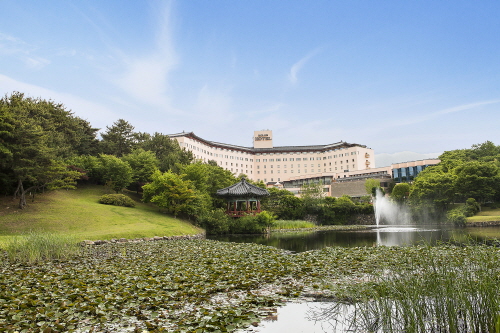
![Cheonggong [Korea Quality] / 청공한옥 [한국관광 품질인증]](http://tong.visitkorea.or.kr/cms/resource/69/2637169_image2_1.jpg)
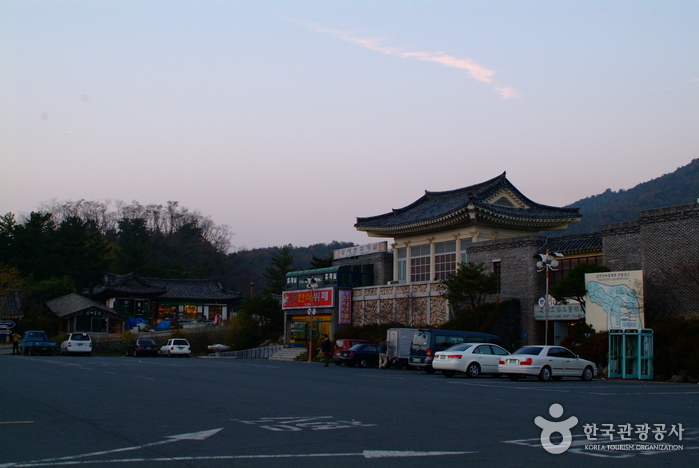
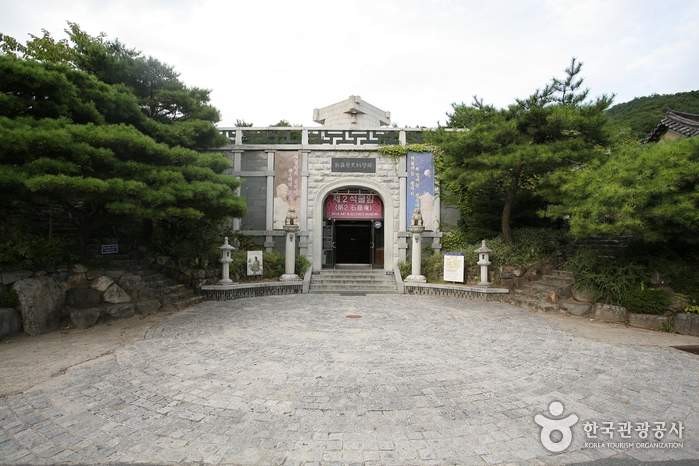
![GyeongjuCheonnyeonhanok Pension [Korea Quality] / 경주천년한옥펜션 [한국관광 품질인증]](http://tong.visitkorea.or.kr/cms/resource/35/2635535_image2_1.jpg)
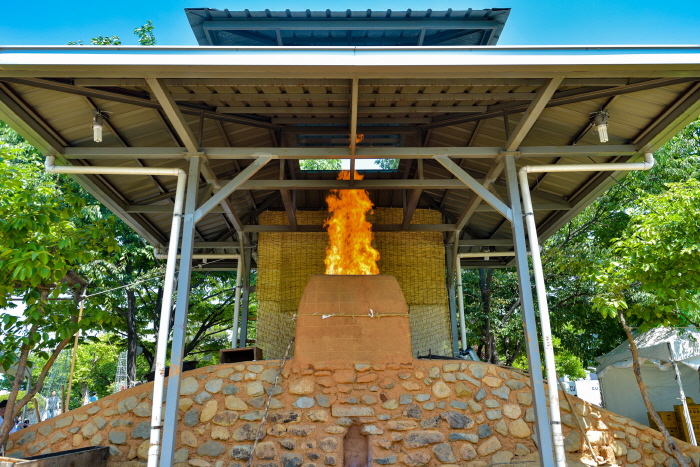
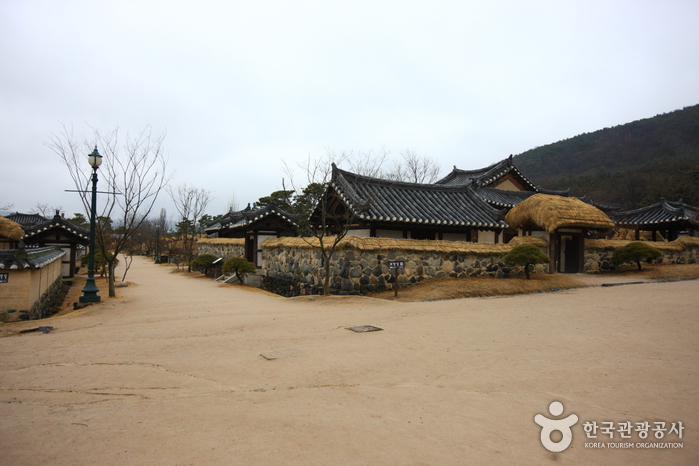
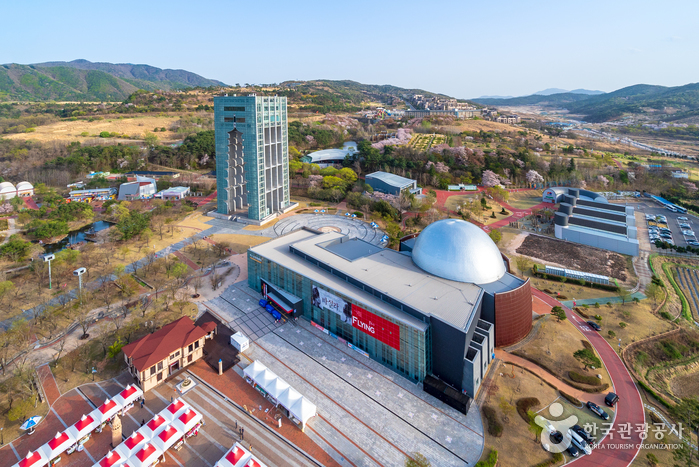
 Français
Français
 한국어
한국어 English
English 日本語
日本語 中文(简体)
中文(简体) Deutsch
Deutsch Español
Español Русский
Русский